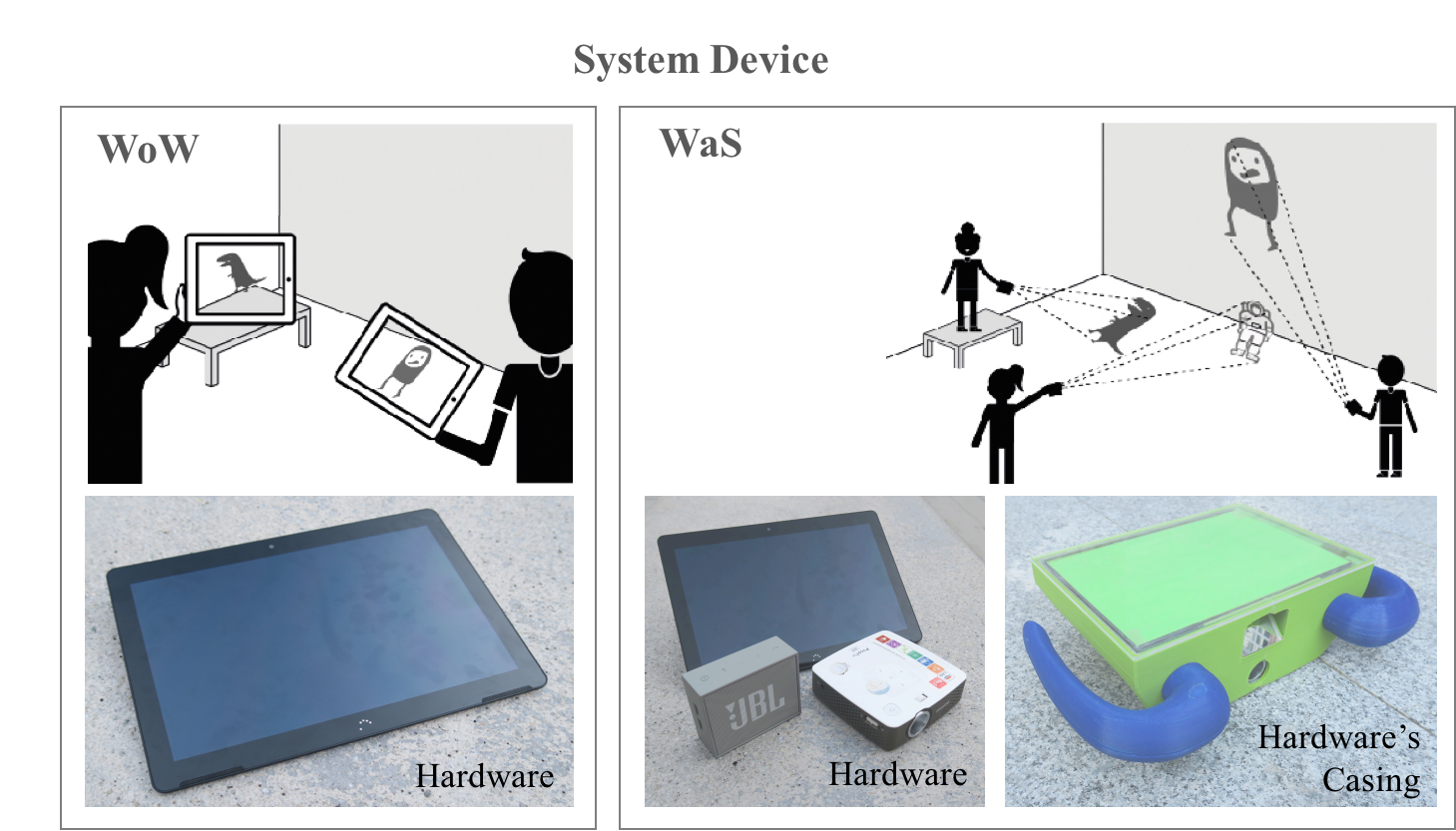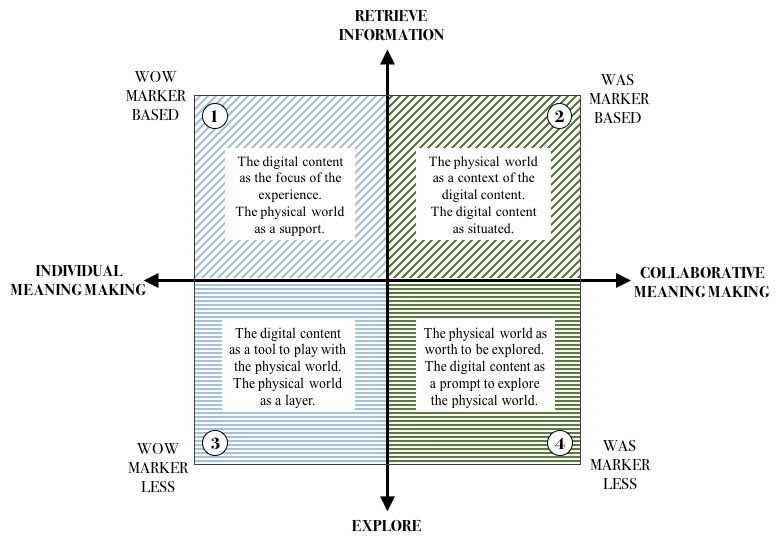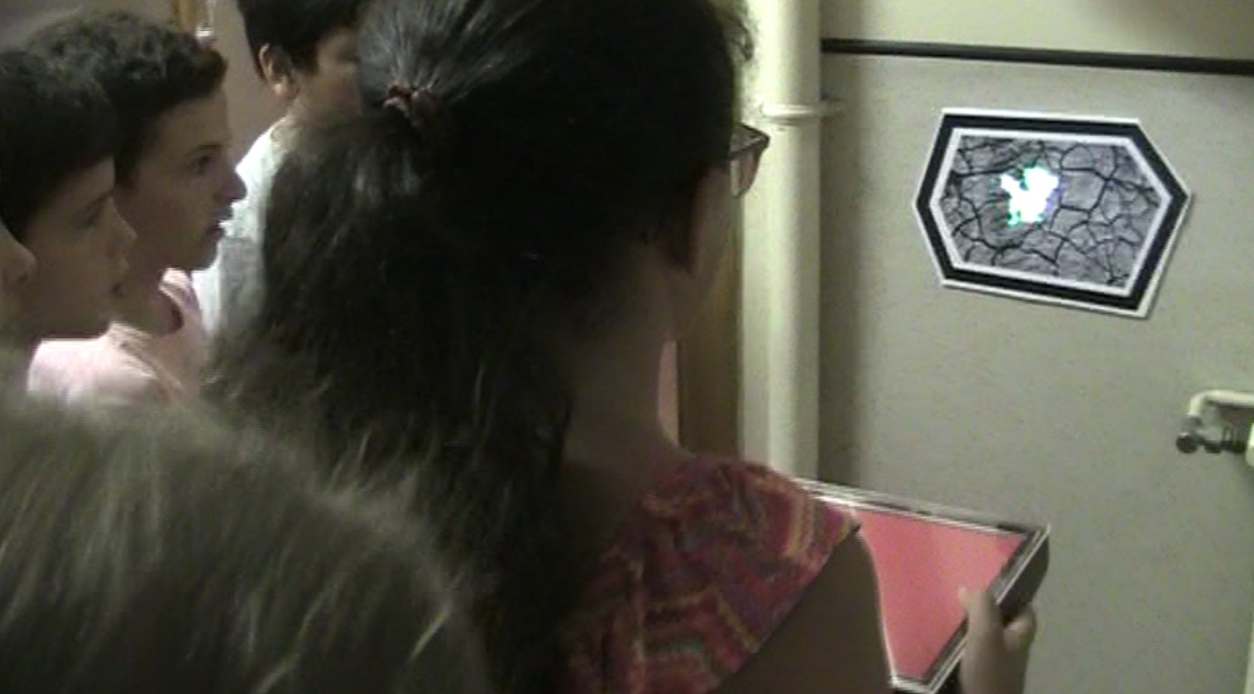EspaiStory
EspaiStory - Fictional Narratives & Mixed Realities
EspaiStory - Fictional Narratives & Mixed Realities
A Mixed Reality system to allow children to interact and create site-specific narratives
EspaiStory is a Mixed Reality system that allows children to create and interact with their own narratives in and on physical space. The children use a special mobile devices, based on the World-as-Support interaction paradigm, to project their characters and their stories on the surrounding physical space. They also physically interact with their stories as if the characters were alive and present in the same shared space. The project aims at enabling children to collaborate in the creation of site-specific contents and at supporting embodied improvisation in storytelling.
The project forms part of the research project Evaluation-Driven Design funded by Spanish Ministry of Economy and Competitiveness (Grant: TIN2014-60599-P).
Background
The research merges theoretical research, ethnographical analysis of children activities related to creating audiovisual stories and Design-Based Research Evaluation with a local school. For the initial prototype we designed a hardware solution based on the combination of an Android tablet and a Philips PicoPix PPX3414 pico-projector bundled in a box and case. At the same time, we developed an pilot interactive experience for the system and an application to facilitate content creation.

Research Goals
- offer to children interactive site-specific narratives
- enable children’s collaborative site-specific content creation
- support coordination and collaboration
- support embodied improvisation in storytelling
Results
We compared two AR/MR interaction paradigms for mobile technologies: (1) the consolidated "Window-on-the-World" (WoW), and (2) the emerging "World-as-Support" (WaS). By analyzing children's understanding and use of space while playing an AR/MR mystery game, and analyzing the collaboration that emerges among them, we show that the two paradigms scaffold children's attention differently during the experience and elicit different forms of collaboration. We conclude by presenting a conceptual framework to distinguish the strengths, weaknesses, and potential of the two AR/MR paradigms, as well as the comparison between marker-based and marker-less technical solutions.


Related Publications:
Laura Malinverni, Cristina Valero, Marie-Monique Schaper, and Narcis Pares. (2018). A conceptual framework to compare two paradigms of augmented and mixed reality experiences. Proceedings of the 17th ACM Conference on Interaction Design and Children. (IDC ’18). ACM, New York, NY, USA, 7-18. DOI: http://doi.org/10.1145/3202185.3202750
Laura Malinverni, Julian Maya, Marie-Monique Schaper and Narcis Pares. (2017). The World-as-Support: Embodied Exploration, Understanding and Meaning-Making of the Augmented World. In Proceedings of the 35th CHI Conference on Human Factors in Computing Systems (CHI ’17). DOI=http://dx.doi.org/10.1145/3025453.3025955
Principal researchers
Narcis ParesResearchers
Laura MalinverniJulian Maya
Cristina Valero
The project is funded by the Spanish Ministry of Economy and Competitiveness.
The Grant number is: TIN2014-60599-P
